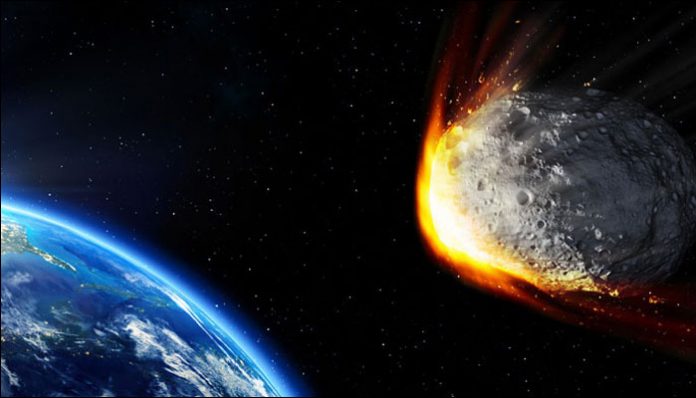An intermediate-sized asteroid will make a close approach to earth on February 4.
A giant asteroid labeled “potentially hazardous” will swing by Earth at a speed of 67,000 miles per hour, according to TIME. The asteroid, named 2002 AJ129, will be 2.6 million miles from Earth, but in space distance, that’s still a “close approach,” according to Paul Chodas, who manages the Center for Near Earth Object Studies at NASA’s Jet Propulsion Laboratory. If you’re concerned that close approach may bring us a close encounter, don’t worry too much; Chodas told TIME that 2002 AJ129 doesn’t have a chance of hitting Earth — at least, not in the next 100 years.
And for those who have read The Andromeda Strain and might be slightly concerned that a “potentially hazardous” object from space is making a close approach, you can lay your fears to rest, too. “Potentially hazardous” in NASA speak just means “any asteroid or comet predicted to travel anywhere within 0.05 Astronomical Units (or reaching under 5 million miles) of Earth’s orbit and that has a size of at least 30 meters or more,” Talia Avakian, writing for TIME, reported.
Turns out 2002 AJ129 is way bigger than 30 meters — it’s actually nearly three-quarters of a mile long, which is longer from end to end than the Burj Khalifa in Dubai is tall.
While 2002 AJ129’s flyby may seem like a big deal to us regular humans, to NASA scientists, this is “fairly routine,” Chodas told TIME. On top of that, NASA isn’t surprised at how snuggly 2002 AJ129 is getting with Earth: “We’ve been tracking it since then so we know its trajectory very accurately and predicted this close approach years ago,” Chodas said. “Close approaches of near-earth objects happen almost daily, and many of them are closer than this.”
What mostly makes this asteroid more attention-grabbing is its sheer size. For comparison, ‘Oumuamua, the asteroid-or-maybe-an-alien-spacecraft (hope lives on, OK — the truth is out there) first spotted in October 2017, was only a quarter-mile long. Chodas did tell TIME that 2002 AJ129’s current size is an estimate, however, and that the asteroid has NASA’s attention. They’ll be able to observe it during the flyby and gauge its actual size, as opposed to the current typical reflectivity-based approximation.
On Feb. 4, scientists will view 2002 AJ129 using the Goldstone Radio Telescope in California and the Arecibo Telescope in Puerto Rico, Avakian reported.
Despite Chodas’ assurances that we’re not in any danger of colliding with 2002 AJ129, there remains the possibility that sometime in the future, another asteroid could decide it wants to hook up with Earth, and we could be in some serious trouble. According to Marshall Brain writing for HowStuffWorks, a mile-wide asteroid called 1997XF11 will “come extremely close” to Earth in 2028. Brain says an asteroid of that size, traveling at 30,000 miles per hour (less than half 2002 AJ129’s projected speed), “has the energy roughly equal to a 1 million megaton bomb.” Which, NBD, would wipe out most of the life on the planet. An impact like that isn’t in the cards yet, but if one were, we might be in luck. NASA has been investigating technology that would allow us to deflect asteroids away from Earth should one end up on a collision course, Avakian added. A test run for the Double Asteroid Reflection Test (DART), which Avakian said “would allow them to strike the asteroid as it’s approaching Earth to shift its orbit through a technique known as kinetic impactor” is scheduled for October 2022.
Until our planetwide defense system is up and running, it’s best to just appreciate the beauty of asteroids like 2002 AJ129 as they scoot on by, hopefully staying 2.6 million miles away.















